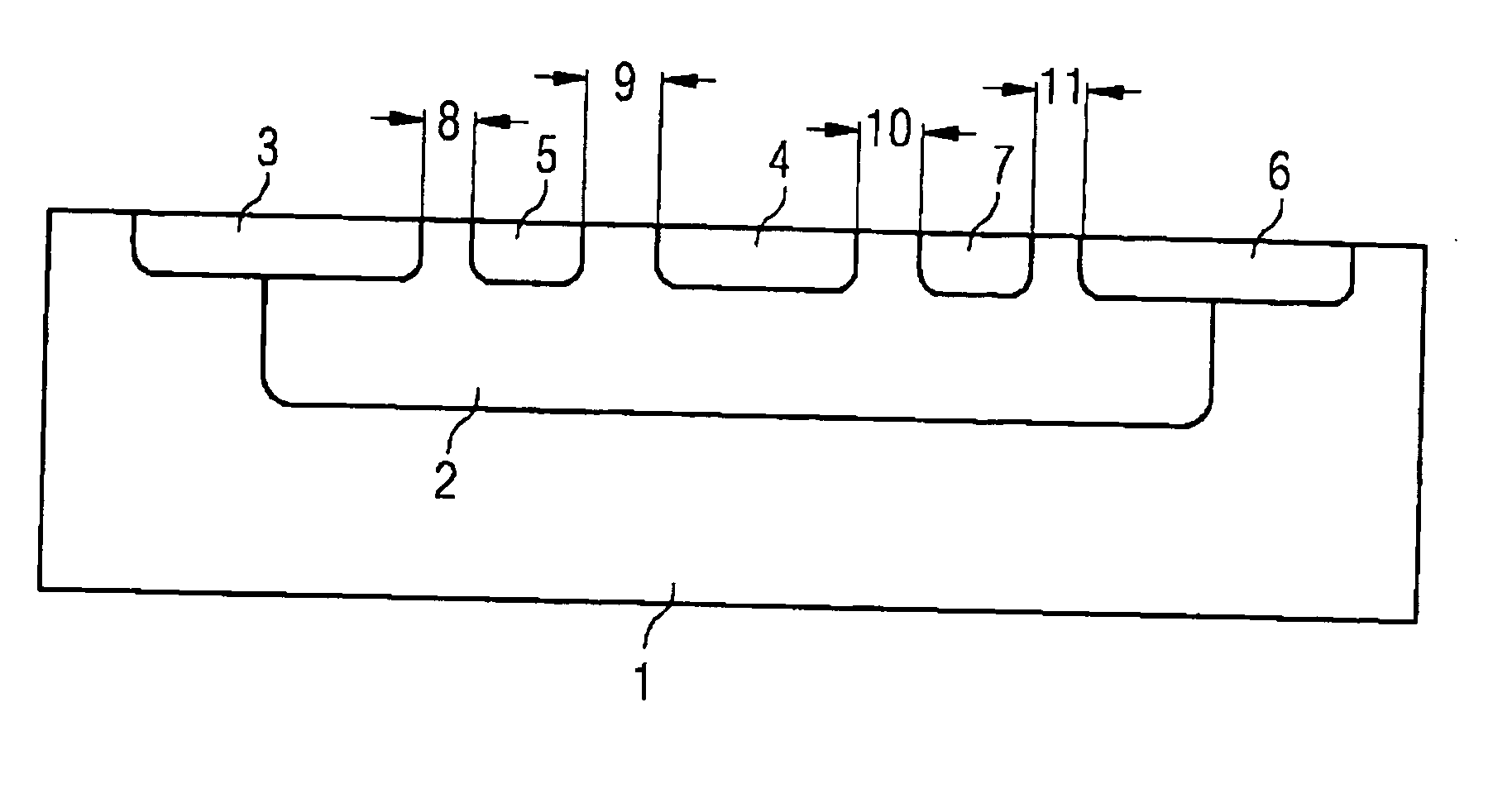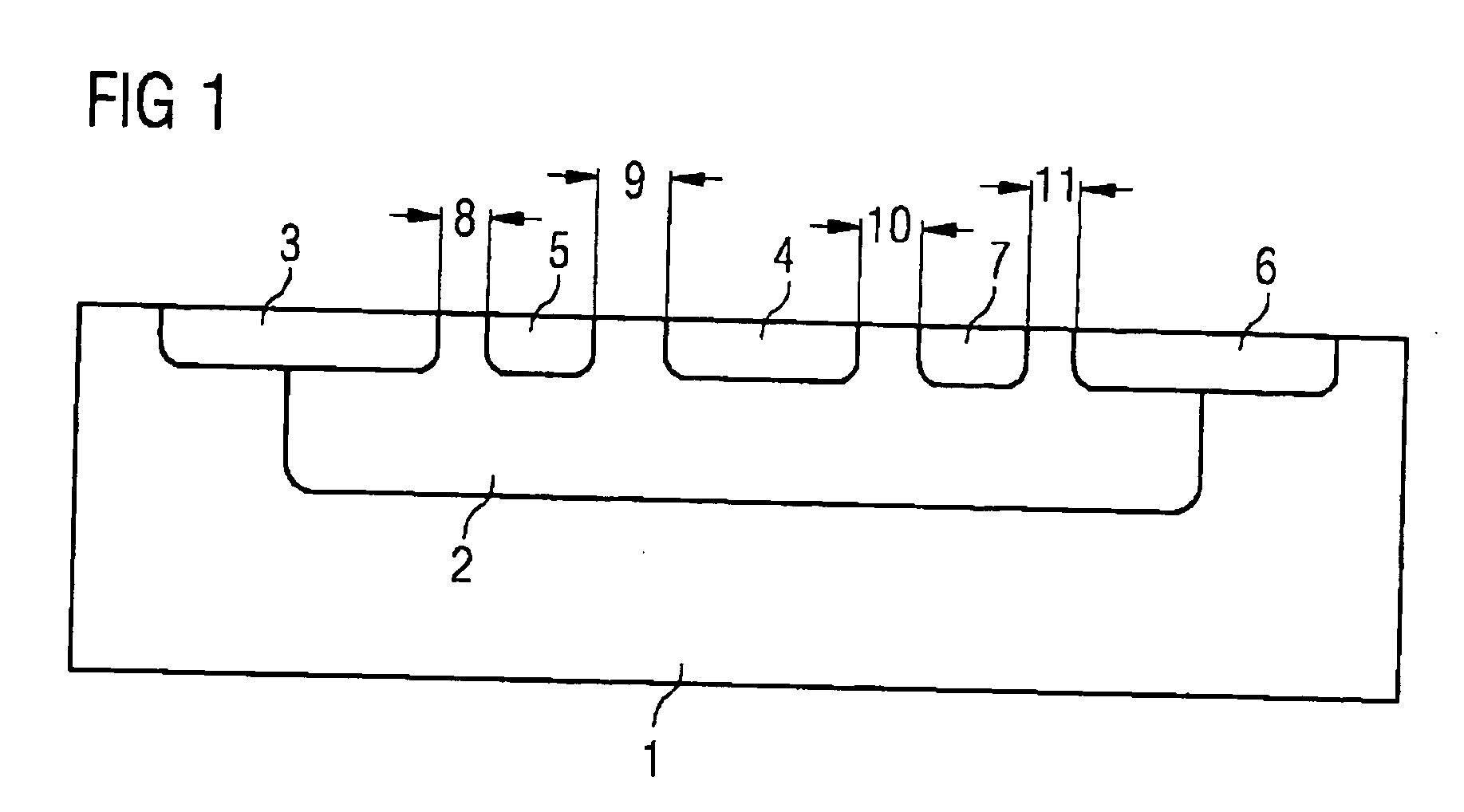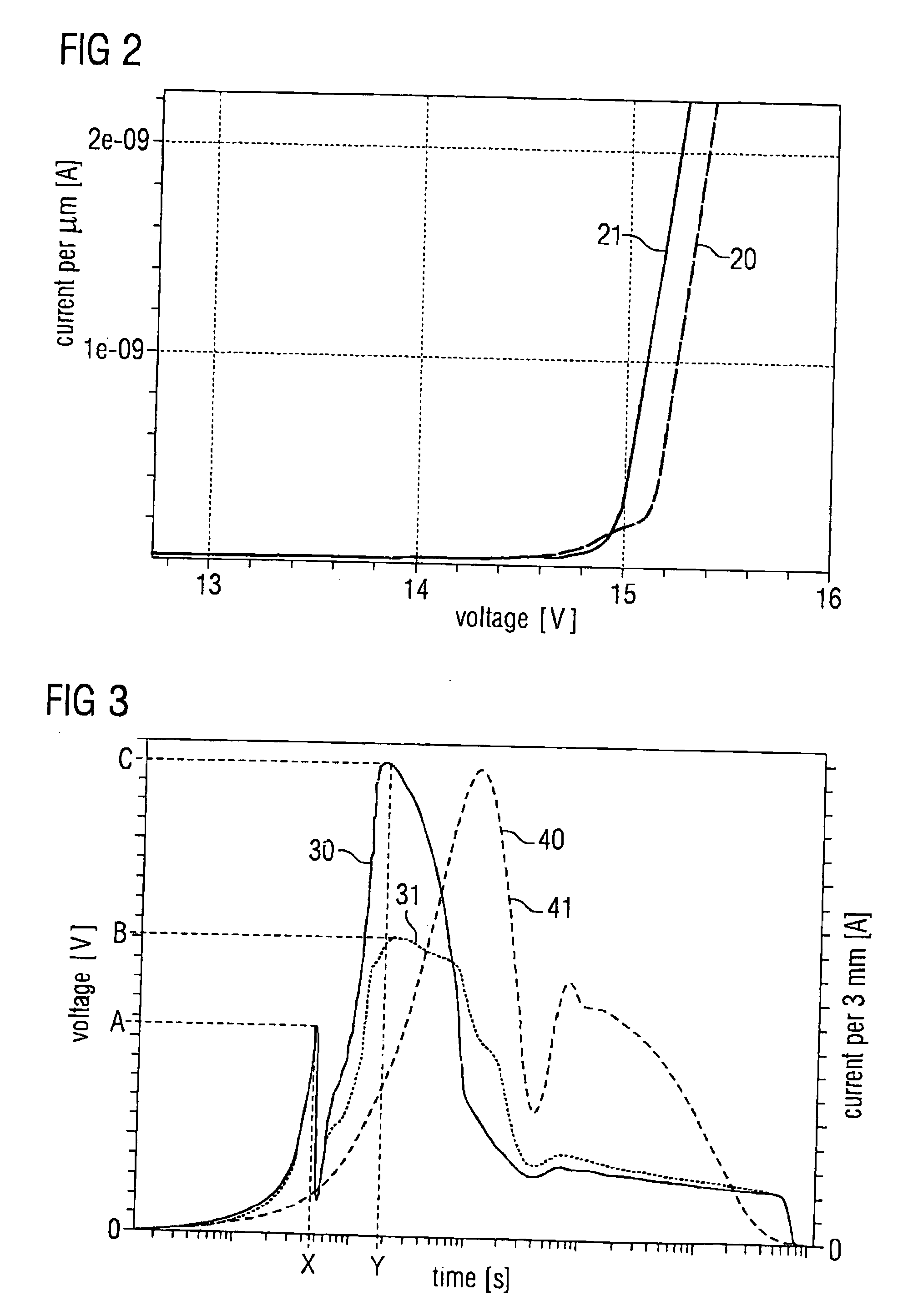ESD protection structure with lower maximum voltage
a protection structure and maximum voltage technology, applied in the direction of semiconductor devices, semiconductor/solid-state device details, electrical apparatus, etc., can solve the problems of certain maximum doping of the base, breakdown of the integrated circuit, and the destruction of the integrated circui
- Summary
- Abstract
- Description
- Claims
- Application Information
AI Technical Summary
Benefits of technology
Problems solved by technology
Method used
Image
Examples
Embodiment Construction
[0029] A preferred embodiment of the inventive semiconductor structure is illustrated in FIG. 1 in a schematical cross section view. A well 2 with an n dopant concentration of maximum 5×1017 cm−3 lies in a p semiconductor substrate with a p dopant concentration of about 1×1015 cm−3. The well 2 is implanted into the semiconductor structure 1 with a phosphor dose of about 4.5×1013 cm−2 and extends from a surface of the semiconductor substrate 1 about 4 to 5 μm into the center of the semiconductor substrate 1. The well 2 serves as base for a pnp bipolar transistor.
[0030] A first area 3 is at the first side edge of the well 2. The first area 3 extends also from the surface of the semiconductor substrate into its center. Thereby, a first part of the first area 3 is within the well 2, while a second part is outside the well 2 in the semiconductor substrate 1. Thus, in a later application, the first area 3 can be connected to ground potential.
[0031] The first area 3 is p doped with a max...
PUM
 Login to View More
Login to View More Abstract
Description
Claims
Application Information
 Login to View More
Login to View More - R&D
- Intellectual Property
- Life Sciences
- Materials
- Tech Scout
- Unparalleled Data Quality
- Higher Quality Content
- 60% Fewer Hallucinations
Browse by: Latest US Patents, China's latest patents, Technical Efficacy Thesaurus, Application Domain, Technology Topic, Popular Technical Reports.
© 2025 PatSnap. All rights reserved.Legal|Privacy policy|Modern Slavery Act Transparency Statement|Sitemap|About US| Contact US: help@patsnap.com



